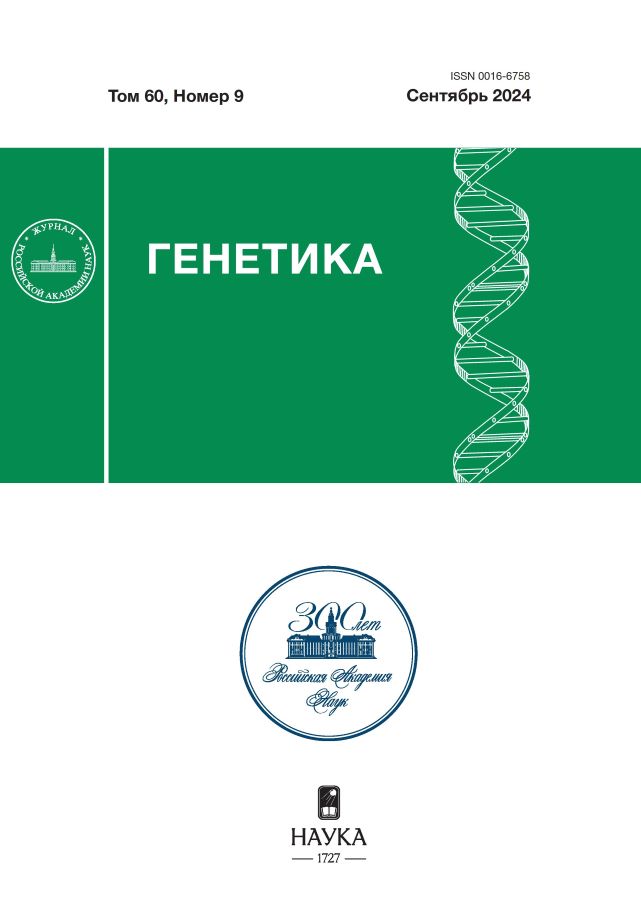Another unsolvable problem and axiom of biology: it is impossible to deduce the properties of cells in an organism from the properties of individual cells
- Authors: Kondratyeva L.G.1,2, Sverdlov E.D.1
-
Affiliations:
- National Research Center “Kurchatov Institute”
- Shemyakin-Ovchinnikov Institute of Bioorganic Chemistry of the Russian Academy of Sciences
- Issue: Vol 60, No 9 (2024)
- Pages: 3-9
- Section: ОБЗОРНЫЕ И ТЕОРЕТИЧЕСКИЕ СТАТЬИ
- URL: https://clinpractice.ru/0016-6758/article/view/667193
- DOI: https://doi.org/10.31857/S0016675824090017
- EDN: https://elibrary.ru/afbxch
- ID: 667193
Cite item
Abstract
Within a brief commentary, the problem of unpredictable “emergent” properties of complex biological systems arising from interactions between their individual components is discussed. We draw attention to the fundamental impossibility of determining the state of the cell within the organism based on the data obtained after its separation from the multicellular system. Briefly considered are the current state of research on the history of the emergence of multicellularity and the complexity it has introduced into the discussion of the evolution of life on Earth. An axiom is proposed summarizing existing data, asserting that properties of multicellular organisms emerge at each level of organization that are unpredictable based on the properties of individual modules and cells. It is not possible to derive from the properties of individual cell components their properties in the whole organism.
Full Text
About the authors
L. G. Kondratyeva
National Research Center “Kurchatov Institute”; Shemyakin-Ovchinnikov Institute of Bioorganic Chemistry of the Russian Academy of Sciences
Author for correspondence.
Email: liakondratyeva@yandex.ru
Russian Federation, Moscow, 123182; Moscow, 117997
E. D. Sverdlov
National Research Center “Kurchatov Institute”
Email: edsverd@gmail.com
Russian Federation, Moscow, 123182
References
- Baysoy A., Bai Z., Satija R., Fan R. The technological landscape and applications of single-cell multi-omics // Nat. Rev. Mol. Cell Biol. 2023. V. № P. 1–19.
- Raredon M.S.B., Yang J., Kothapalli N. et al. Comprehensive visualization of cell-cell interactions in single-cell and spatial transcriptomics with NICHES // Bioinformatics. 2022. V. 39. № 1. doi: 10.1093/bioinformatics/btac775
- Liu Z., Sun D., Wang C. Evaluation of cell-cell interaction methods by integrating single-cell RNA sequencing data with spatial information // Genome Biology. 2022. V. 23. № 1. P. 218. doi: 10.1186/s13059-022-02783-y
- Lahnemann D., Koster J., Szczurek E. et al. Eleven grand challenges in single-cell data science // Genome Biol. 2020. V. 21. № 1. P. 31. doi: 10.1186/s13059-020-1926-6
- Machado L., Relaix F., Mourikis P. Stress relief: Emerging methods to mitigate dissociation-induced artefacts // Trends Cell Biol. 2021. V. 31. № 11. P. 888–897. doi: 10.1016/j.tcb.2021.05.004
- Miao L., Yin Z., Knoll A.H. et al. 1.63-billion-year-old multicellular eukaryotes from the Chuanlinggou Formation in North China // Sci. Adv. 2024. V. 10. № 4. doi: 10.1126/sciadv.adk3208
- Pennisi E. Tiny fossils upend timeline of multicellular life // Science. 2024. V. 383. № 6681. P. 352–353. doi: 10.1126/science.ado2396
- Yan Y. Shale facies algal filaments from Chuanlinggou Formation in Jixian County // Bull. Tianjin Inst. Geol. and Mineral Resources. 1989. V. 21. № P. 149–165.
- Levinton J.S. The Cambrian explosion: Нow do we use the evidence // BioScience. 2008. V. 58. № 9. P. 855–864.
- Briggs D.E. The cambrian explosion // Curr. Biol. 2015. V. 25. № 19. P. R864–R868. doi: 10.1016/j.cub.2015.04.047
- Darwin Ch. On the origin of species // 1872. London: J. Murray, 502 p.
- Steele E.J., Al-Mufti S., Augustyn K.A. et al. Cause of Cambrian еxplosion – terrestrial or cosmic? // Progress in Biophys. and Mol. Biol. 2018. V. 136. № P. 3–23. doi: https://doi.org/10.1016/j.pbiomolbio.2018.03.004
- Thomas B. Cambrian clash: Fossils and molecular clocks disagree // ICR News. 2008. https://www.icr.org/article/cambrian-clash-fossils-molecular-clocks-disagree
- Lee M.S.Y., Dorey J.B. Evolution: Dampening the Cambrian explosion // Curr. Biol. 2018. V. 28. № 23. P. r1353–r1355. doi: 10.1016/j.cub.2018.10.012
- West-Eberhard M.J. Modularity as a universal emergent property of biological traits // J. Exp. Zool. Mol. Dev. Evol. 2019. V. 332. № 8. P. 356–364. doi: 10.1002/jez.b.22913
- Heng H.H. The conflict between complex systems and reductionism // Jama. 2008. V. 300. № 13. P. 1580–1581.
- Johnson C.W. What are emergent properties and how do they affect the engineering of complex systems? // Reliability Engineering & System Safety. 2006. V. 91. № 12. P. 1475–1481.
- Korn R. The emergence principle in biological hierarchies // Biol. and Philosophy. 2005. V. 20. № 1. P. 137–151.
- Suki B., Bates J.H., Frey U. Complexity and emergent phenomena // Compr. Physiol. 2011. V. 1. № 2. P. 995–1029.
- Vicente F.N., Diz-Muñoz A. Order from chaos: How mechanics shape epithelia and promote self-organization // Curr. Op. in Syst. Biol. 2023. V. 32–33. doi: https://doi.org/10.1016/j.coisb.2023.100446
- Brown O.R., Hullender D.A. Neo-darwinism must mutate to survive // Prog. Biophys. Mol. Biol. 2022. V. 172. № P. 24–38. doi: 10.1016/j.pbiomolbio.2022.04.005
- Brown O.R., Hullender D.A. Biological evolution requires an emergent, self-organizing principle // Prog. Biophys. Mol. Biol. 2023. V. 182. P. 75–102. doi: 10.1016/j.pbiomolbio.2023.06.001
- Xavier da Silveira Dos Santos A., Liberali P. From single cells to tissue self-organization // Febs J. 2019. V. 286. № 8. P. 1495–1513. doi: 10.1111/febs.14694
- Einstein A. No problem can be solved from the same level of consciousness that created it. https://www.azquotes.com/quote/87303 (accessed on 10-02-2024)
- Raatikainen P. Gödel’s incompleteness theorems // Stanford Encyclopedia of Philosophy (Winter 2013). http://plato.stanford.edu/entries/goedel-incompleteness/
- Бор Н. Атомная физика и человеческое познание // 1961. M.: Изд-во иностр. лит-pы, 152 c.
Supplementary files












